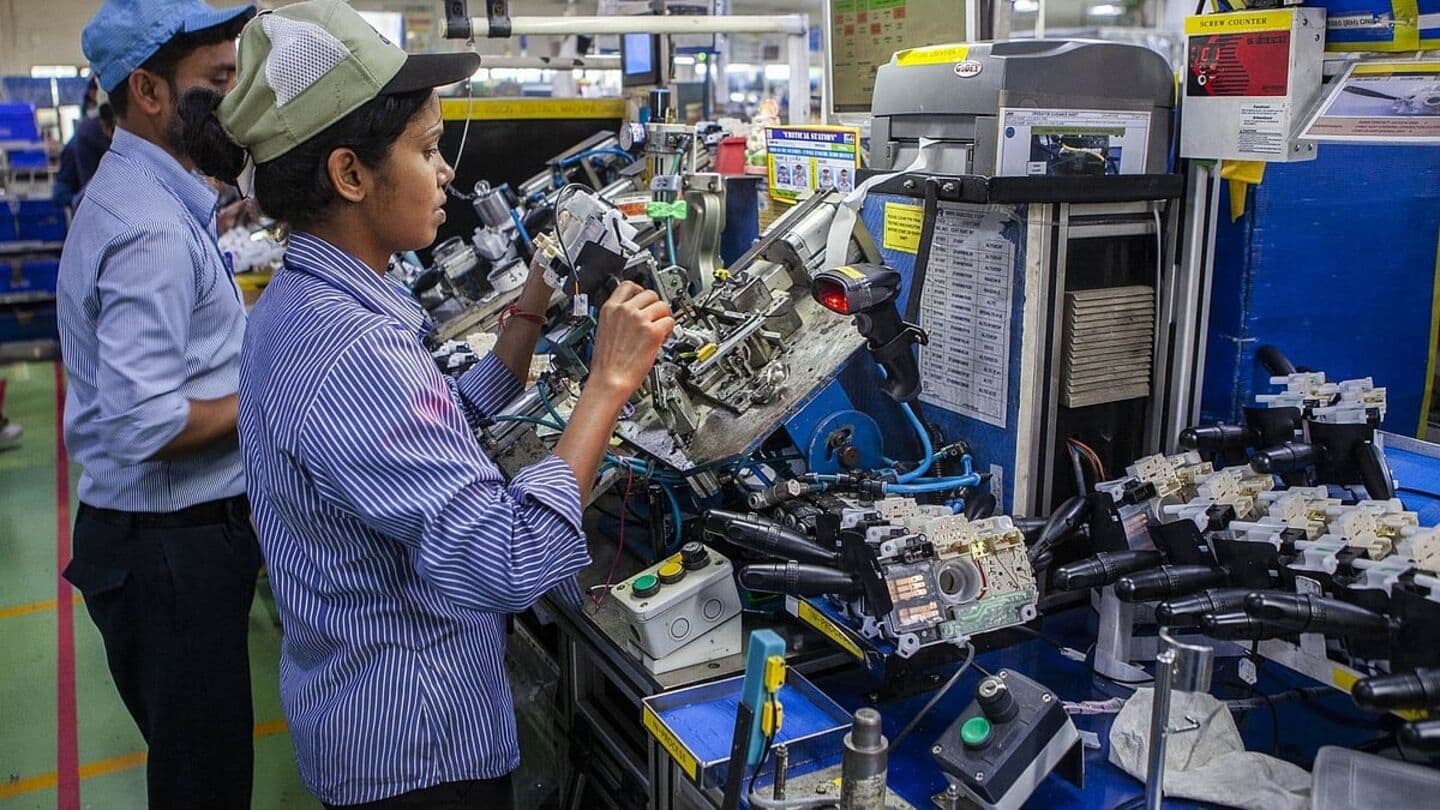
India's manufacturing growth hits 14-month high on robust demand
What's the story
India's manufacturing sector has witnessed a major boost, with the HSBC India Manufacturing Purchasing Managers' Index (PMI) hitting a 14-month high of 58.4 in June. The PMI, which is compiled by S&P Global, was up from May's figure of 57.6 and matches a preliminary estimate released last week. A PMI above 50 indicates expansion in manufacturing activity while anything below that signals contraction.
Economic growth
Surge in factory output and new orders
Pranjul Bhandari, HSBC's Chief India Economist, attributed the PMI surge to "robust end-demand." He said this has fueled expansions in output, new orders, and job creation. The factory output witnessed its fastest growth since April last year owing to strong demand. New orders also surged at their steepest rate in almost a year with international demand providing major support.
Trade boost
Export orders spike, US markets major contributor
India's export orders have seen a major spike, recording the third-highest growth rate since data collection began in March 2005. The US markets have been a major contributor to this surge. This comes even as uncertainties over US tariffs continue to loom large, with trade talks between India and the world's largest economy hitting a roadblock over duties on auto parts, steel and agricultural products.
Employment surge
Manufacturers hire additional staff at unprecedented pace
The strong demand has led manufacturers to hire additional staff at an unprecedented pace—the fastest since the survey began over two decades ago. Despite some increase in iron and steel prices, price pressures for manufacturers eased in June with input cost inflation slowing to its lowest level in four months. This moderation is significant when compared to historical trends.
Pricing strategy
Companies continue to raise selling prices
Companies, however, continued to raise their selling prices significantly—though at a softer pace than last month. They are passing on costs such as freight, labor and material expenses to customers. Business confidence remained positive but dipped slightly to an eight-month low as some manufacturers expressed concerns over competition, inflation and possible changes in consumer preferences.